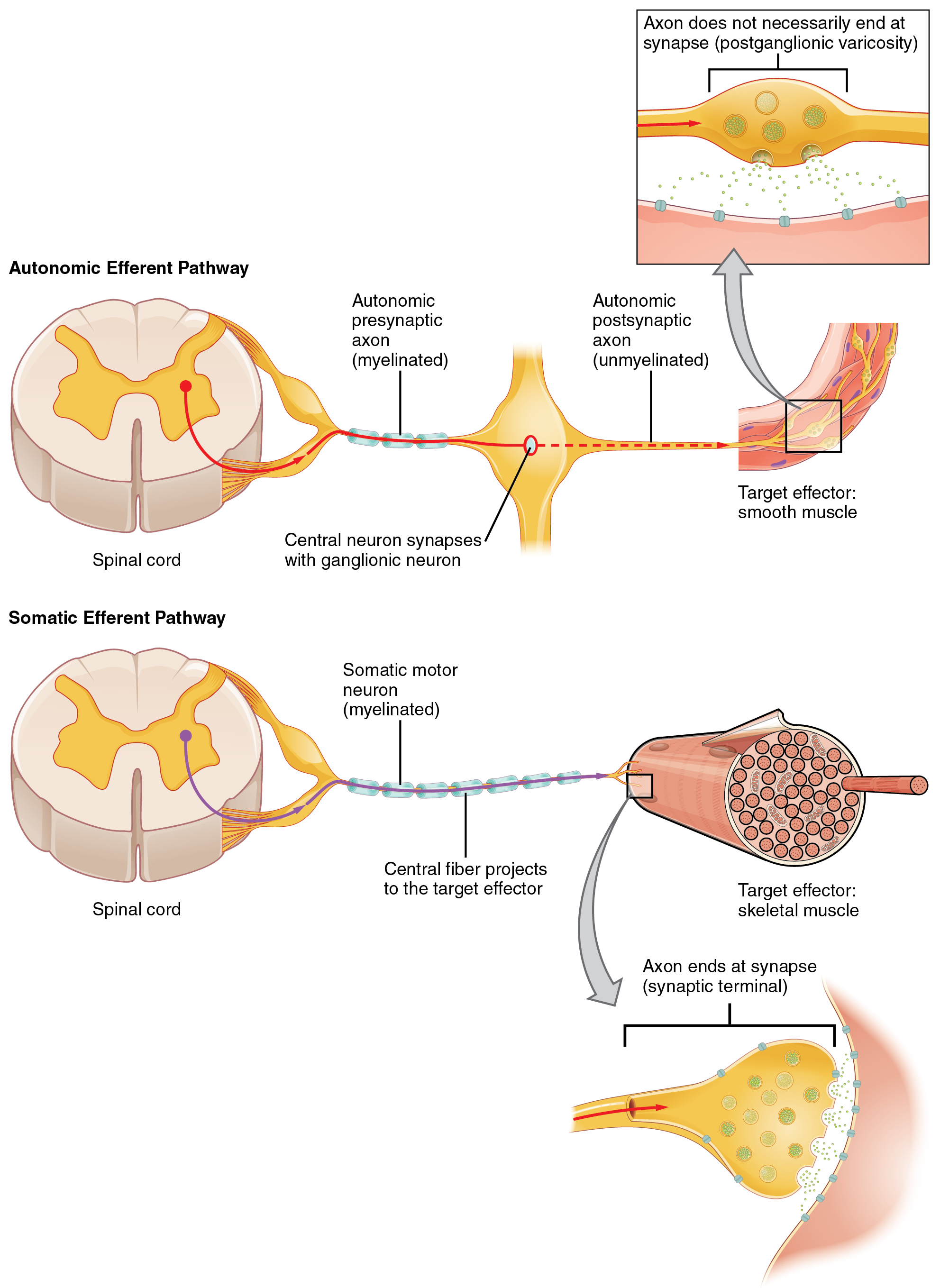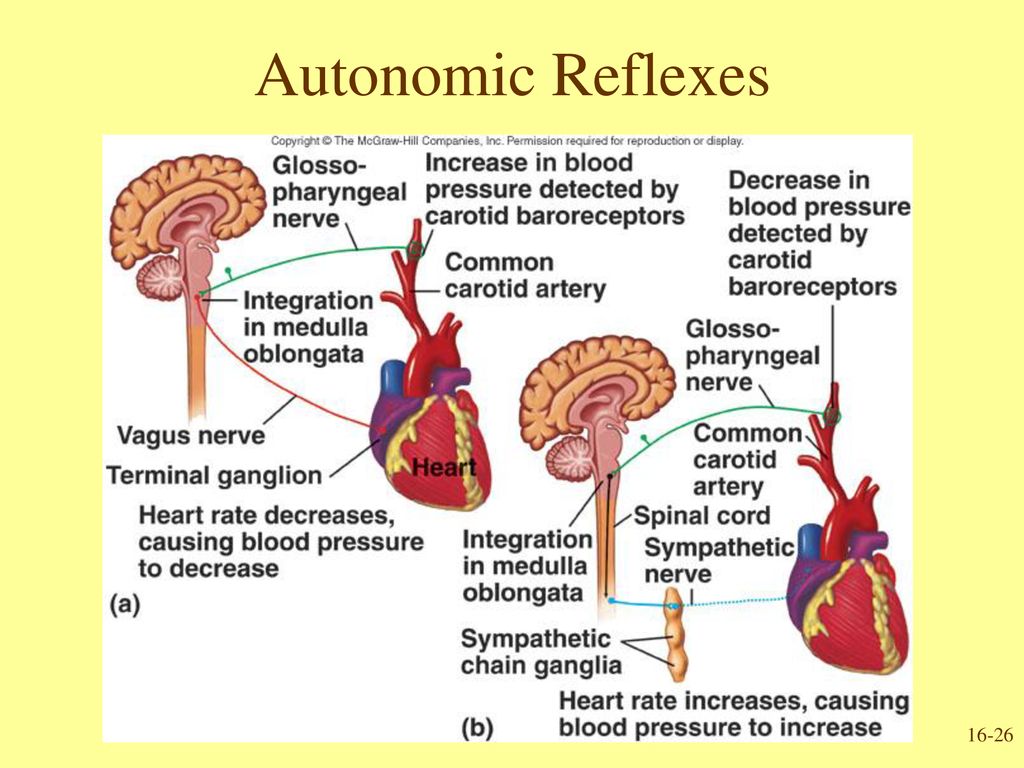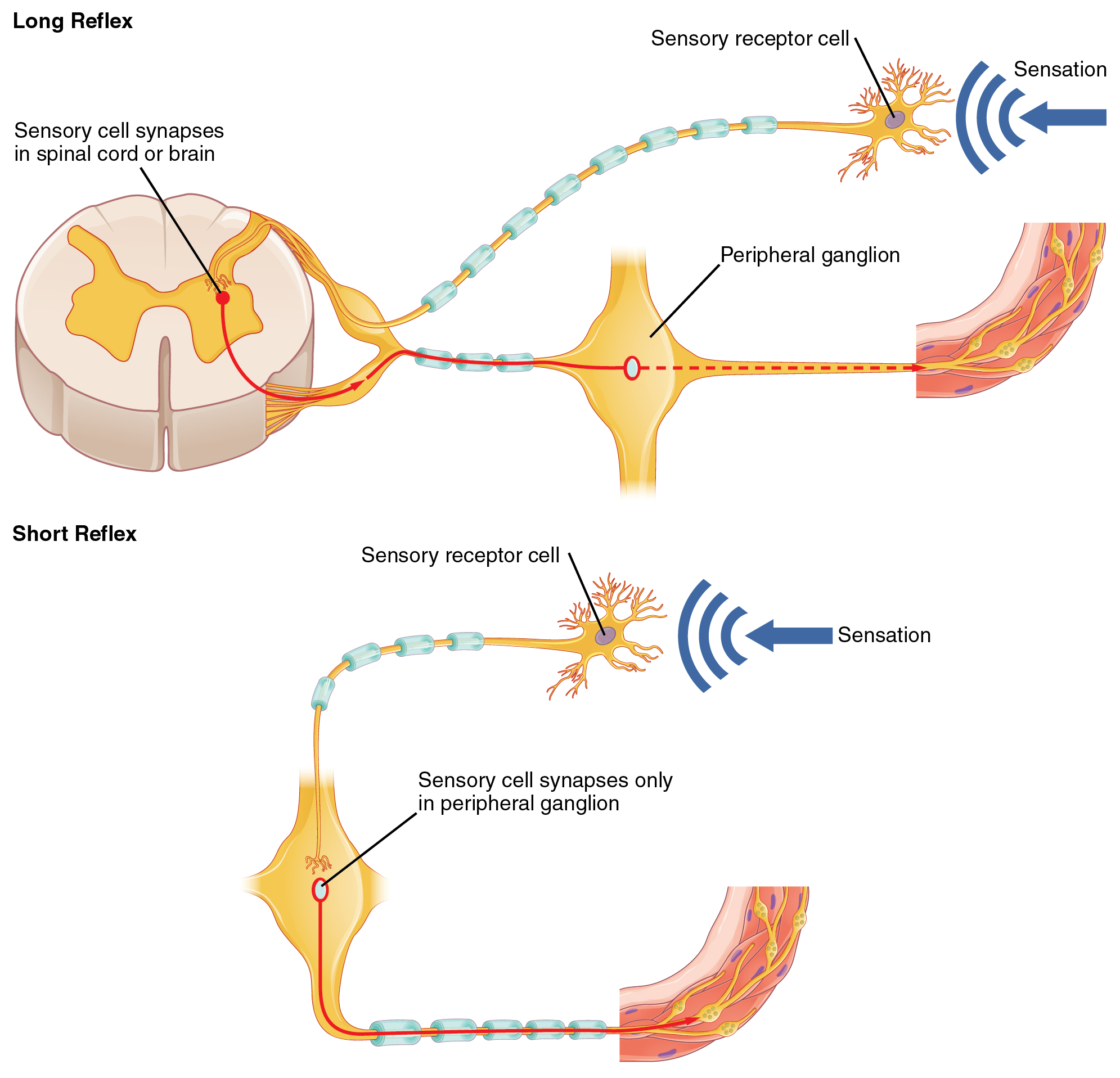How is the heart regulated by autonomic reflexes
Home » » How is the heart regulated by autonomic reflexesYour How is the heart regulated by autonomic reflexes images are available in this site. How is the heart regulated by autonomic reflexes are a topic that is being searched for and liked by netizens today. You can Download the How is the heart regulated by autonomic reflexes files here. Get all free vectors.
If you’re looking for how is the heart regulated by autonomic reflexes pictures information related to the how is the heart regulated by autonomic reflexes topic, you have come to the ideal site. Our site frequently provides you with hints for refferencing the maximum quality video and image content, please kindly surf and locate more enlightening video content and graphics that match your interests.
How Is The Heart Regulated By Autonomic Reflexes. The afferent information from changes in arterial pressure and blood gas levels reflexively modulates the activity of the relevant visceral motor pathways and ultimately of target smooth and cardiac muscles and other more specialized structures. An example of this type of autonomic reflex is the baroreceptor reflex. WATKINS in Peripheral Neuropathies 1978 INTRODUCTION. Click to see full answer.
 Autonomic Nervous System Physiology And Pharmacology Overview Review From slideshare.net
Autonomic Nervous System Physiology And Pharmacology Overview Review From slideshare.net
At rest the vasculature is receiving tonic information from the sympathetic nervous system. The main difference between the somatic and autonomic systems is in what target tissues are effectors. - The sympathetic division speeds up heart rate while parasympathetic division slows it down - The sympathetic division induces dilation of the pupil while parasympathetic division induces the. Autonomous regulation is involuntary and occurs without the subjects awareness of these functions through autonomic reflexes. Autonomic Reflexes Most of the visceral functions of the body are regulated by autonomic reflexes Cardiovascular. Singh in Heart Failure.
At rest the vasculature is receiving tonic information from the sympathetic nervous system.
In recent years instantaneous heart rate HR monitoring has provided a convenient and simple technique for doing this by measuring the degree of autonomic denervation of the heart. Autonomic reflexes are unconscious motor reflexes relayed from the organs and glands to the CNS through visceral afferent signaling. Autonomic functions include control of respiration cardiac regulation the cardiac control center vasomotor activity the vasomotor center and certain reflex actions such as coughing sneezing swallowing and vomiting. Within the brain the autonomic nervous system is regulated by the. How is the heart regulated by autonomic reflexes. Control of heart smooth muscles throughout the body and endocrine and exocrine organs.
 Source: courses.lumenlearning.com
Source: courses.lumenlearning.com
How is the heart regulated by autonomic reflexes. It is stretch reflex in the main arteries such as carotid artery to detect the blood pressure Gastrointestine. The Autonomic Nervous System. A Companion to Braunwalds Heart Disease Fourth Edition 2020. Many important variables in the body are monitored and regulated in the hypothalamus and the brainstem including heart rate blood pressure gastrointestinal peristalsis and glandular secretion body temperature hunger thirst plasma volume and plasma osmolarity.
 Source: pinterest.com
Source: pinterest.com
Autonomic reflexes sometimes involve the spinal cord. In recent years instantaneous heart rate HR monitoring has provided a convenient and simple technique for doing this by measuring the degree of autonomic denervation of the heart. Within the brain the autonomic nervous system is regulated by the hypothalamus. Autonomic reflexes are unconscious motor reflexes relayed from the organs and glands to the CNS through visceral afferent signaling. Autonomic Reflexes Most of the visceral functions of the body are regulated by autonomic reflexes Cardiovascular.
 Source: med.libretexts.org
Source: med.libretexts.org
Within the brain the autonomic nervous system is regulated by the. Somatic responses are solely based on skeletal muscle contraction. How is the heart regulated by autonomic reflexes. Autonomous regulation is involuntary and occurs without the subjects awareness of these functions through autonomic reflexes. Singh in Heart Failure.
 Source: slideshare.net
Source: slideshare.net
The accepted model of autonomic control of heart rate HR during dynamic exercise indicates that the initial increase is entirely attributable to the withdrawal of parasympathetic nervous system PSNS activity and that subsequent increases in HR are entirely attributable to increases in cardiac sympathetic activity. Autonomic functions include control of respiration cardiac regulation the cardiac control center vasomotor activity the vasomotor center and certain reflex actions such as coughing sneezing swallowing and vomiting. Autonomic reflexes are unconscious motor reflexes relayed from the organs and glands to the CNS through visceral afferent signaling. WATKINS in Peripheral Neuropathies 1978 INTRODUCTION. The autonomic nervous system ANS is responsible for controlling many physiological functions.
 Source: pinterest.com
Source: pinterest.com
Autonomic reflexes sometimes involve the spinal cord. An example of this type of autonomic reflex is the baroreceptor reflex. The sympathetic branch of the ANS is responsible for stimulating the fight or flight. By regulating heart rate blood pressure and peripheral blood flow the autonomic nervous system dynamically adjusts the functions of the cardiovascular system to ensure adequate levels of cardiac output will meet the perfusion and metabolic requirements of. Autonomic Reflexes Most of the visceral functions of the body are regulated by autonomic reflexes Cardiovascular.
 Source: courses.lumenlearning.com
Source: courses.lumenlearning.com
Within the brain the autonomic nervous system is regulated by the hypothalamus. The autonomic system however targets cardiac and smooth muscle as well as glandular tissue. Autonomic nervous system is a control system that acts largely unconsciously and regulates bodily functions such as the heart rate digestion respiratory rate pupillary response urination and sexual arousal. John Keaney Jagmeet P. The main difference between the somatic and autonomic systems is in what target tissues are effectors.
 Source: pinterest.com
Source: pinterest.com
The autonomic nervous system ANS is responsible for controlling many physiological functions. Within the brain the autonomic nervous system is regulated by the hypothalamus. Autonomic reflexes sometimes involve the spinal cord. Many important variables in the body are monitored and regulated in the hypothalamus and the brainstem including heart rate blood pressure gastrointestinal peristalsis and glandular secretion body temperature hunger thirst plasma volume and plasma osmolarity. The ANS has both sympathetic and parasympathetic divisions that work together to maintain balance.
 Source: getbodysmart.com
Source: getbodysmart.com
It induces the force of contraction of the heart and its heart rate. It is stretch reflex in the main arteries such as carotid artery to detect the blood pressure Gastrointestine. Autonomic control of cardiovascular function. The ANS has both sympathetic and parasympathetic divisions that work together to maintain balance. It induces the force of contraction of the heart and its heart rate.
 Source: pinterest.com
Source: pinterest.com
In addition it controls the peripheral resistance of blood vessels. By regulating heart rate blood pressure and peripheral blood flow the autonomic nervous system dynamically adjusts the functions of the cardiovascular system to ensure adequate levels of cardiac output will meet the perfusion and metabolic requirements of. The autonomic nervous system ANS controls bodily functions that are under involuntary control. A Companion to Braunwalds Heart Disease Fourth Edition 2020. Autonomic control of cardiovascular function.
 Source: pinterest.com
Source: pinterest.com
How is the heart regulated by autonomic reflexes. Within the brain the autonomic nervous system is regulated by the. Increasingly these reflexes have served as the primary targets for ANS modulation as a therapy for the treatment of heart failure. Singh in Heart Failure. Sympathetic outflow to the heart and peripheral tissues is regulated by cardiovascular reflexes.
 Source: slidetodoc.com
Source: slidetodoc.com
The Autonomic Nervous System. In addition it controls the peripheral resistance of blood vessels. Autonomic reflexes are unconscious motor reflexes relayed from the organs and glands to the CNS through visceral afferent signaling. - The sympathetic division speeds up heart rate while parasympathetic division slows it down - The sympathetic division induces dilation of the pupil while parasympathetic division induces the. Control of heart smooth muscles throughout the body and endocrine and exocrine organs.
 Source: ahajournals.org
Source: ahajournals.org
It is stretch reflex in the main arteries such as carotid artery to detect the blood pressure Gastrointestine. Autonomic control of cardiovascular function. The ANS has both sympathetic and parasympathetic divisions that work together to maintain balance. Increasingly these reflexes have served as the primary targets for ANS modulation as a therapy for the treatment of heart failure. How is the heart regulated by autonomic reflexes.
 Source: slideplayer.com
Source: slideplayer.com
Somatic responses are solely based on skeletal muscle contraction. - The sympathetic division speeds up heart rate while parasympathetic division slows it down - The sympathetic division induces dilation of the pupil while parasympathetic division induces the. Autonomic neuropathy in diabetics can be detected by demonstrating the presence of abnormal cardiovascular reflexes. The autonomic central network receives information from internal sensory organs the afferent system integrates large amounts. Control of heart smooth muscles throughout the body and endocrine and exocrine organs.
 Source: pinterest.com
Source: pinterest.com
The autonomic nervous system ANS is responsible for controlling many physiological functions. The autonomic central network receives information from internal sensory organs the afferent system integrates large amounts. The afferent information from changes in arterial pressure and blood gas levels reflexively modulates the activity of the relevant visceral motor pathways and ultimately of target smooth and cardiac muscles and other more specialized structures. Autonomic reflexes are unconscious motor reflexes relayed from the organs and glands to the CNS through visceral afferent signaling. WATKINS in Peripheral Neuropathies 1978 INTRODUCTION.
 Source: pinterest.com
Source: pinterest.com
Control of heart smooth muscles throughout the body and endocrine and exocrine organs. Autonomic reflexes are unconscious motor reflexes relayed from the organs and glands to the CNS through visceral afferent signaling. The afferent information from changes in arterial pressure and blood gas levels reflexively modulates the activity of the relevant visceral motor pathways and ultimately of target smooth and cardiac muscles and other more specialized structures. The receptors in the nose and mouth send a signal to parasympathetic to notify the. Autonomic neuropathy in diabetics can be detected by demonstrating the presence of abnormal cardiovascular reflexes.
 Source: pinterest.com
Source: pinterest.com
An example of this type of autonomic reflex is the baroreceptor reflex. A Companion to Braunwalds Heart Disease Fourth Edition 2020. John Keaney Jagmeet P. In recent years instantaneous heart rate HR monitoring has provided a convenient and simple technique for doing this by measuring the degree of autonomic denervation of the heart. The Autonomic Nervous System.
 Source: pinterest.com
Source: pinterest.com
Autonomic reflexes are unconscious motor reflexes relayed from the organs and glands to the CNS through visceral afferent signaling. Sympathetic outflow to the heart and peripheral tissues is regulated by cardiovascular reflexes. Autonomic Reflexes Most of the visceral functions of the body are regulated by autonomic reflexes Cardiovascular. Autonomic nervous system is a control system that acts largely unconsciously and regulates bodily functions such as the heart rate digestion respiratory rate pupillary response urination and sexual arousal. In addition it controls the peripheral resistance of blood vessels.
 Source: opentextbc.ca
Source: opentextbc.ca
The ANS has both sympathetic and parasympathetic divisions that work together to maintain balance. Autonomic functions include control of respiration cardiac regulation the cardiac control center vasomotor activity the vasomotor center and certain reflex actions such as coughing sneezing swallowing and vomiting. The autonomic nervous system ANS controls bodily functions that are under involuntary control. Click to see full answer. Autonomous regulation is involuntary and occurs without the subjects awareness of these functions through autonomic reflexes.
This site is an open community for users to submit their favorite wallpapers on the internet, all images or pictures in this website are for personal wallpaper use only, it is stricly prohibited to use this wallpaper for commercial purposes, if you are the author and find this image is shared without your permission, please kindly raise a DMCA report to Us.
If you find this site beneficial, please support us by sharing this posts to your own social media accounts like Facebook, Instagram and so on or you can also save this blog page with the title how is the heart regulated by autonomic reflexes by using Ctrl + D for devices a laptop with a Windows operating system or Command + D for laptops with an Apple operating system. If you use a smartphone, you can also use the drawer menu of the browser you are using. Whether it’s a Windows, Mac, iOS or Android operating system, you will still be able to bookmark this website.